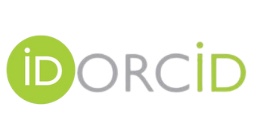Tratamiento del cólico nefrítico con diclofenaco sódico
Keywords:
cólico nefrítico, diclofenaco sódicoAbstract
Introducción: habitualmente se utilizan como tratamiento para el cólico nefrítico los antiespasmódicos y relajantes de la fibra lisa muscular, pero desde los años 90 muchos estudios avalan el uso de los antiinflamatorios no esteroideos como mejor opción de tratamiento para el alivio sintomático del mismo. Objetivo: evaluar la efectividad del diclofenaco sódico en el tratamiento del cólico nefrítico. Métodos: se realizó un estudio observacional, descriptivo, de corte longitudinal, retrospectivo en 54 pacientes que asistieron al Servicio de Urgencia del Hospital General Docente “Leopoldito Martínez”, del municipio San José de las Lajas, Mayabeque por presentar cólico nefrítico y recibieron tratamiento con diclofenaco sódico, en el período comprendido de enero 2010 a febrero 2011. Resultados: el 57,4 % de los pacientes se encontraban entre los 31 y 40 años de edad, el 83,3 % pertenecieron al sexo masculino, en el 75,6 % se comprobó hematuria microscópica en el parcial de orina y en el ultrasonido abdominal se constató litiasis renoureteral en el 62,5 % y pielocaliectasia ligera en el 12,5 %. la evolución del dolor en los pacientes se evaluó previo y posterior a la administración intramuscular de diclofenaco sódico, a través de la Escala Visual Análoga (EVA). Donde se observó que en el mayor por ciento de los pacientes hubo una disminución significativa del dolor, cuyo promedio de tiempo de estancia en el hospital fue de 37,5 minutos después de administrado el medicamento.
Downloads
References
Díaz MT, Irigoyen GS, Ponce Ch M. Diclofenaco y pargeverina: descripción de efectividad en el manejo del cólico nefrítico agudo. Revista Chilena de Urología [Internet]. 2007 [citado 10 Ene 2012];72(3). Disponible en: http://www.urologosdechile.cl/pdf.php?id=380
Lee C, Gnanasegaram D, Maloba M. Best evidence topic report. Rectal or intravenous non-steroidal anti-inflammatory drugs in acute renal colic. Emerg Med J [Internet]. 2005 [cited 2012 Jan 15];22(9) . Available from: http://emj.bmj.com/content/22/9/653.full
Moe O. Kidney stones: pathophysiology and medical management. Lancet [Internet]. 2006 [cited 2012 Jan 15];367(9507). Available from: http://www.ncbi.nlm.nih.gov/pubmed/16443041
Springhart WP, Marguet CG, Sur RL, Norris RD, Delvecchio FC, Young MD [et al]. Forced versus minimal intravenous hydration in the management of acute renal colic: a randomized trial. J Endourol [Internet]. 2006 Oct [cited 2012 Jan 15];20(10). Available from: http://www.ncbi.nlm.nih.gov/pubmed/17094744
Hollingsworth JM, Rogers MA, Kaufman SR, Bradford TJ, Saint S, Wei JT [et al]. Medical therapy to facilitate urinary stone passage: a meta-analysis. Lancet [Internet]. 2006 Sep [cited 2012 Jan 15];368(9542). Available from: http://www.ncbi.nlm.nih.gov/pubmed/17011944
Paterson R, Fernandez A, Razvi H, Sutton R. Evaluation and medical management of the kidney stone patient. Can Urol Assoc J [Internet]. 2010 Dec [cited 2011 Jan 10];4(6). Available from: http://www.ncbi.nlm.nih.gov/pmc/articles/PMC2997825/
Miller NL, Lingeman JE. Management of kidney stones. BMJ [Internet]. 2007 March [cited 2012 Jan 15];334(7591). Available from: http://www.ncbi.nlm.nih.gov/pmc/articles/PMC1808123/
Worcester EM, Coe FL. Nephrolithiasis. Prim Care [Internet]. 2008 Jun [cited 2012 Jan 15];35(2). Available from: http://www.ncbi.nlm.nih.gov/pmc/articles/PMC2518455/
Esquena S, Millán F, Sánchez FM, Rousaud F, Marchant F, Villavicencio H. Cólico renal: revisión de la literatura y evidencia científica. Actas Urol Esp [internet]. 2006 Mar [cited 2012 Jan 15];30(3). Disponible en: http://scielo.isciii.es/pdf/aue/v30n3/v31n3a04.pdf
Gravina GL, Costa AM, Ronchi P, Galatioto GP, Angelucci A, Castellani D [et al]. Tamsulosin treatment increases clinical success rate of single extracorporeal shock wave lithotripsy of renal stones. Urology [Internet]. 2005 Jul [cited 2012 Jan 15];66(1). Available from: http://www.ncbi.nlm.nih.gov/pubmed/15992885
Holdgate A, Pollock T. Systematic review of the relative efficacy of nonsteroidal anti-inflammatory drugs and opioids in the treatment of acute renal colic BMJ [Internet]. 2004 [cited 2012 Jan 15];328. Available from: http://www.bmj.com/content/328/7453/1401
Cohen E, Hafner R, Rotenberg Z, Fadilla M, Garty M.Comparison of ketorolac and diclofenac in the treatment of renal colic. Indian J Urol [Internet]. 2008 [cited 2012 Jan 15];24(2). Available from: http://www.bmj.com/content/328/7453/1401
Lo S, Johnston R, Al Sameraaii A, Metcalf PA, Rice ML, Jonathan G. Pathophysiology of reno-ureteral colic. Urol Int [Internet]. 2010 [cited 2012 http://www.ncbi.nlm.nih.gov/pubmed/15133328
Álvarez Dumont M, Vázquez Céspedes C, Romero Herreros E, López MD, López Carrasco JL, López-Torres JH. Estudio de casos y controles sobre cólicos nefríticos y consumo de fármacos predisponentes. Revista Clínica de Medicina de Familia [Internet]. 2007 Feb [citado 24 Jun 2011];1(6). Disponible en: http://www.redalyc.org/pdf/1696/169617626004.pdf
Spivacow FR, Del Valle EE, Zancheta JR. Litiasis renal: Modificaciones bioquímicas durante el seguimiento. Medicina (B. Aires) [Internet]. 2006 Jun [citado 12 Mar 2012];66(3). Disponible en: http://www.scielo.org.ar/scielo.php?script=sci_arttext&pid=S0025-76802006000300002&lng=es .
Servais A, Daudon M, Knebelman B. Drug-induced renal calculi. Rev Urol [Internet]. 2006 [cited 2012 Jan 15];5(4). Available from: http://www.ncbi.nlm.nih.gov/pmc/articles/PMC1508366/
Holdgate A, Pollock T. Nonsteroidal anti-inflammatory drugs (NSAIDs) versus opioids for acute renal colic. Cochrane Database Syst Rev. [Internet]. 2004 [cited 2012 Jan 15];1. Available from: http://www.ncbi.nlm.nih.gov/pubmed/14974058
Davenport K, Timoney AG, Keeley FX. Conventional and alternative methods for providing analgesia in renal colic. BJU Int [internet]. 2005 [cited 2012 Mar 12];95(3). Available from: http://onlinelibrary.wiley.com/store/10.1111/j.1464-410X.2005.05286.x/asset/j.1464-410X.2005.05286.x.pdf?v=1&t=he8pdwwb&s=1f9f26aba614d7826197a53462751dee8ceee7bf
Published
How to Cite
Issue
Section
License
Medimay protects copyright from the very first moment the submission is made, but upon publication it assumes a Creative Commons 4.0 (cc-by-nc) license, which allows the use of the work to share (copy and redistribute the material in any medium or format) and adapt (remix, transform and build from the material) as long as exclusive mention is made of the publication in the journal as a primary source, prohibiting its commercialization. The author always retains his/her right.














 This site is licensed under a
This site is licensed under a